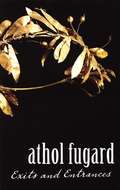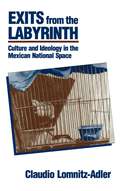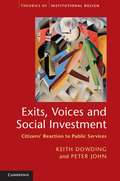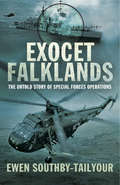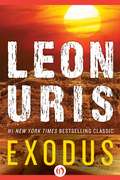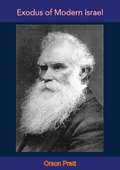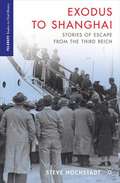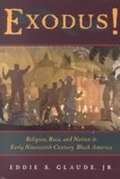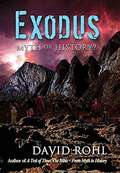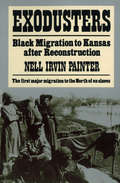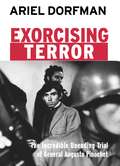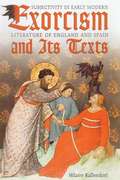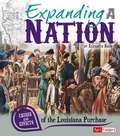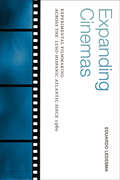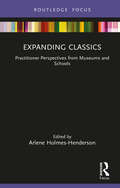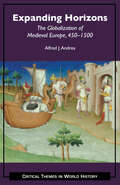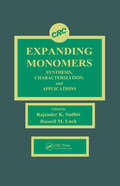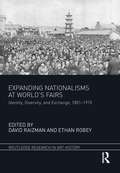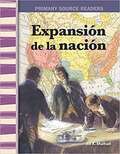- Table View
- List View
Exits and Entrances
by Athol Fugard Marianne Mcdonald"A rare playwright who could be a primary candidate for either the Nobel Prize in Literature or the Nobel Peace Prize."--The New YorkerThis new play about life and art by renowned playwright Athol Fugard is based on his early friendship with actor Andrew Huegonit, considered the finest classical actor of their native South Africa. It is the story of one great artist's exit from the stage and another's beginning theater career. Athol Fugard's work includes Blood Knot, "Master Harold"...and the boys, and My Children! My Africa! He has been widely produced in South Africa and London, on Broadway and across the United States.
Exits and Entrances: Interviews with Seven Who Reshaped African-American Images in Movies
by Frank Manchel“A worthy successor to Every Step a Struggle . . . the contributions to American cinema of these determined and courageous rebels will never be forgotten.” —Denise Youngblood, author ofCinematic Cold WarWhile Every Step a Struggle recalled the performers who fought to give black artists a voice and a presence in film and on stage, this new ground-breaking book focuses on the personalities who replaced the pioneers and refused to abide by Jim Crow traditions. Presented against a detailed background of the revolutionary post-World War II era up to the mid-1970s, the individual views of Mae Mercer, Brock Peters, Jim Brown, Ivan Dixon, James Whitmore, William Marshall and Ruby Dee in heretofore unpublished conversations from the past reveal just how tumultuous and extraordinary the technological, political, and social changes were for the artists and the film industry. Using extensive documentation, hundreds of films, and fascinating private recollections, Dr. Manchel puts a human face both on popular culture and race relations.“Using the method of oral history and the mature thinking of a senior scholar, Exits and Entrances enhances our understanding of the difficult slog to create a truthful, ‘round’ image of African-Americans in U.S. commercial films. This collection is a gold mine of information for future research and should be in all libraries which value film research.” —Peter C. Rollins, Emeritus Editor-in-Chief of Film & History
Exits from the Labyrinth: Culture and Ideology in the Mexican National Space
by Claudio Lomnitz-AdlerCan we address the issue of nationalism without polemics and restore it to the domain of social science? Claudio Lomnitz-Adler takes a major step in that direction by applying anthropological tools to the study of national culture. His sweeping and innovative interpretation of Mexican national ideology constructs an entirely new theoretical framework for the study of national and regional cultures everywhere. With an analysis of culture and ideology in internally differentiated regional spaces—in this case Morelos and the Huasteca in Mexico—Exits from the Labyrinth links rich ethnographic and historical research to two specific aspects of Mexican national ideology and culture: the history of legitimacy and charisma in Mexican politics, and the relationship between the national community and racial ideology.
Exits, Voices and Social Investment
by Keith Dowding Peter JohnOver fifty years ago Albert Hirschman argued that dissatisfied consumers could either voice complaint, or exit when they were dissatisfied with goods or services. Loyal consumers would voice rather than exit. Hirschman argued that making exit easier from publicly provided services, such as health or education, would reduce voice, taking the richest and most articulate away and this would lead to the deterioration of public services. This book provides the first thorough empirical study of these ideas. Using a modified version of Hirschman's account, examining private and collective voice and viewing loyalty as a form of social investment, it is grounded on a dedicated five-year panel study of British citizens. Given government policies over the past decade or more which make exit easier from public providers, this is a timely publication for all those who care about the quality of government services.
Exocet Falklands: The Untold Story of Special Forces Operations
by Ewen Southby-Tailyour&“A fascinating account of three SAS missions to counter the Exocet missile . . . from ill-thought out ideas to near suicidal one-way trips onto enemy soil.&”—Soldier Magazine This is a revelatory account of three un-tabulated special forces operations, PLUM DUFF, MIKADO and KETTLEDRUM, that were tasked to destroy Argentina&’s Exocet missiles during the 1982 Falkland&’s campaign. Interviews with the SAS officer commanding Operation PLUM DUFF, members of the reconnaissance patrol for Operation MIKADO, plus the navigator of the helicopter that flew eight troopers into Tierra del Fuego, has allowed the author to describe the tortuous events that led, instead, to a significant survival story. The RAF pilots ordered to conduct an &“assault-landing&” of two Hercules onto Rio Grande air base during Operation MIKADO have spoken of the extraordinary procedures they developed: so have the commander of the SBS and the captain of the British submarine involved in Operation KETTLEDRUM. The Super Étendard pilots who sank HMS Sheffield and MV Atlantic Conveyor and then &“attacked&” HMS Invincible, plus a key member of the Argentine special forces and the brigadier defending Rio Grande, add credence, depth and gravitas to the saga: as does an equally revealing interview with the SIS (MI6) officer who led the world-wide search for Exocets on the black market. Disturbing over-confidence by commanders at home was finely counter-balanced by stirring accounts of inspiring physical and moral courage across the South Atlantic. Exocet Falklands is a ground-breaking work of investigative military history from which many salutary lessons can be learned. &“Between politics, diplomacy and barbouzeries, this well-documented work will lead you in the arcane of what should have changed the course of this war.&”—Air Fan
Exodus
by Leon UrisThe epic saga of Israel's earliest days and the people who fought to make it their home The Exodus was just one ship among many that carried survivors of the Holocaust to Palestine to establish a new nation. But the path that Jewish immigrants took to enter British-controlled Palestine was a difficult one, fraught with danger and political intrigue. The boat was intercepted by British forces and the refugees were placed in concentration camps. Uris's blockbuster novel traces the lives of the men and women who brave British naval blockades to help Israel come into being, from Ari Ben Canaan, who works tirelessly to smuggle in settlers, to Kitty Fremont, an American nurse drawn into a vast, tragic history. Weaving together fact and fiction, history and dramatic storylines, Exodus stands today as one of the most influential narratives of the founding of the State of Israel. This ebook features an illustrated biography of Leon Uris including rare photos from the author's estate.
Exodus of Modern Israel: Being The Daily Diary Of Orson Pratt
by Orson PrattThis book, which was first published in 1947, is the daily diary of Orson Pratt on the exodus of the Latter-Day Saints from Nauvoo, Illinois to the Rocky Mountains in Colorado. It also contains detailed information on plans instituted by the Prophet Joseph Smith for this Exodus, as related by Anson Call, Wilford Woodruff, Brigham Young, Historian Edward W. Tullidge, Samuel W. Richards, Helen Mar Whitney, and by Joseph the Prophet himself.
Exodus to Shanghai
by Steve HochstadtOf the 400,000 German-speaking Jews that escaped the Third Reich, about 16,000 ended up in Shanghai, China. This groundbreaking volume gathers 20 years of interviews with over 100 former Shanghai refugees. It offers a moving collective portrait of courage, culture shock, persistence, and enduring hope in the face of unimaginable hardships.
Exodus!: Religion, Race, and Nation in Early Nineteenth-Century Black America
by Jr. Eddie S. GlaudeNo other story in the Bible has fired the imagination of African Americans quite like that of Exodus. Its tale of suffering and the journey to redemption offered hope and a sense of possibility to people facing seemingly insurmountable evil. "Exodus!" shows how this biblical story inspired a pragmatic tradition of racial advocacy among African Americans in the early 19th century - a tradition based not on race but on a moral politics of respectability. <p><p> Eddie S. Glaude, Jr., begins by comparing the historical uses of Exodus by black and white Americans and the concepts of "nation" it generated. He then traces the roles that Exodus played in the National Negro Convention movement, from its first meeting in 1830 to 1843, when the convention decided - by one vote - against supporting Henry Highland Garnet's call for slave insurrection. <p><p> "Exodus!" reveals the deep historical roots of debates over African-American national identity that continue to rage today. It should engage anyone interested in the story of black nationalism and the promise of African-American religious culture.
Exodus: Myth or History
by David M. RohlDavid Rohl's latest book, now on Kindle, reveals the true archaeological history of the biblical stories – the Israelite Sojurn in Egypt beginning with Joseph, the Exodus under the leadership of Moses, and the Conquest of the Promisede Land led by Joshua. The site of Israel's bondage in Goshen is uncovered; the route of the Exodus is explained in great detail; and the walls of Jericho that 'fell down flat' are exposed. <p><p> This book is richly illustrated in full colour, with photos, charts, and maps to help the reader understand and appreciate the evidence that confirms the historical accuracy of the greatest events in the Old Testament narratives. As one newspaper declared, 'the Bible is back in business!'
Exodusters: Black Migration to Kansas After Reconstruction
by Nell Irvin PainterThe first major migration to the North of ex-slaves.
Exorcising Terror: The Incredible Unending Trial of General Augusto Pinochet (Open Media Series)
by Ariel DorfmanRenowned author Ariel Dorfman, obsessed for twenty-five years with the malignant shadow General Pinochet cast upon Chile and the world, followed every twist and turn of the four year old trial in Great Britain, Spain and Chile as well as in the U.S., the country that had created Pinochet. Told as a suspense thriller, filled with court-room drama and sudden reversals of fortune, the book at the same time addresses some of today's most burning issues, made all the more urgent after the terrorist attacks of September 11th 2001. What are the limits of national sovereignty in a globalizing world? How does an ever more interconnected world judge crimes committed against humanity? What role do memory and pain and the rights of the survivors play in this struggle for a new system of justice? But above all, the author, by listening carefully to the voices of Pinochet's many victims, explores how can we purge ourselves of terror and fear once we have been traumatized, and asks if we can build peace and reconciliation without facing a turbulent and perverse past.
Exorcism and Its Texts: Subjectivity in Early Modern Literature of England and Spain (The Royal Society of Canada Special Publications)
by Hilaire KallendorfExorcism and demonic possession appear as recurrent motifs in early modern Spanish and English literatures. In Exorcism and Its Texts, Hilaire Kallendorf demonstrates how this 'infection' was represented in some thirty works of literature by fifteen different authors, ranging from canonical classics like Shakespeare, Cervantes, Ben Jonson, and Lope de Vega, to obscure works by anonymous writers. From comic and tragic drama to picaresque narrative and eight other genres, possession worked as a paradigm through which authors could convey extraordinary experience, including not only demonic possession but also madness or even murder. The devil was thought to be able to enter the bodily organs and infect memory, imagination, and reason. Some came to believe that possession was tied to enthusiasm, poetic frenzy, prophecy, and genius. Authors often drew upon sensational details of actual exorcisms. In some cases, such as in Shakespeare, curing the body (and the body politic) meant affirming cultural authority; in others, as with Zamora, it clearly meant subverting it. Drawing on the disciplines of literary theory and history, Exorcism and its Texts is the first comprehensive study of this compelling topic.
Expanding A Nation: Causes And Effects Of The Louisiana Purchase (Cause And Effect Series)
by Elizabeth RaumIn 1803 the United States was still a small, young country. Just 17 states made up the Union, stretching from the Atlantic coast to the Mississippi River. European countries claimed the rest of the land in North America.
Expanding Austenland: The Pride and Prejudice Fanfiction Archive (Palgrave Fan Studies)
by Áine MaddenExpanding Austenland: The Pride and Prejudice Fanfiction Archive explores Jane Austen’s reception in popular culture through an exploration of the ever-expanding terrain of online fanfiction, professionally published (profic) texts, and other intertextual reworkings inspired by the author’s most popular novel, Pride and Prejudice. The book argues that given its pervasiveness, Pride and Prejudice could be usefully considered not as a single novel, but as an entire ‘archive’ of interrelated texts, or as a portal that opens a ‘virtual world’ for readers to expand and explore. By examining the Pride and Prejudice archive of interrelated texts, this book analyses the process through which an individual novel can develop a virtual life, or afterlife. The evolving world that is opened by Pride and Prejudice, and extended and enriched through fanfiction, is conceptualised in the monograph as ‘Austenland’.
Expanding Cinemas: Experimental Filmmaking across the Luso-Hispanic Atlantic since 1960 (SUNY series in Latin American Cinema)
by Eduardo LedesmaThis is the first book on experimental cinemas of Latin American and Spain to offer a comprehensive look at old and new technologies, including Super 8, VHS, cell phones, virtual reality, artificial intelligence, and more. From the militant films of the 1960s to today's expanded reality experiences, filmmakers in Argentina, Spain, Cuba, Colombia, Brazil, and Mexico have continually used alternative formats both to dialogue with international movements and to counter commercial cinematic trends. To make this argument and cover this vast geographic and historical terrain, Eduardo Ledesma adopts a transnational and intermedial approach, examining exchanges and associations between cineastes to better understand how their films were created and circulated. Ledesma works to untangle both the relations between media and the associations of experimental cinema to cultural phenomena such as diaspora, exile, displacement, and immigration. Throughout the book, connections are further made to other global avant-garde and alternative cinemas and formats, including in the United States.
Expanding Class: Power and Everyday Politics in Industrial Communities, The Netherlands 1850–1950
by Don KalbExpanding Class is the study and story of industrial class relations in North Brabant, a Catholic province of The Netherlands, over a hundred-year period. In examining the lives of workers in one of Europe's more idiosyncratic industrial regions, Don Kalb affirms the utility of class analysis while responding to the cultural critics who have encouraged a movement away from this focus in labor history. In so doing, Expanding Class advances an interdisciplinary historical anthropology of working-class formation. Basing his analysis on oral as well as archival sources, Kalb reveals a dynamic relationship between capitalist industrialization, locality, and cultural class identities.Expanding Class compares Brabant's quaint central shoemaking district to its electrical boomtown Eindhoven, home of the enormous Philips Corporation. It introduces the concept of "flexible familism," a sociological phenomenon in which family daughters were employed to facilitate a cheap and ample labor force. Industrialists manipulated and fostered flexible familism to ensure the discipline and loyalty of the working-class community. By using the industrial Netherlands as a paradigm, Kalb reveals new and productive ways to examine class construction and the development of labor history in other countries over the past thirty years, steering a path between the two schools of thought--cultural and economic--that have dominated labor history discussions in recent years.
Expanding Classics: Practitioner Perspectives from Museums and Schools (Classics In and Out of the Academy)
by Arlene Holmes-HendersonThis volume explores innovative ways of expanding classical languages and cultures to educational and museum audiences. It shows that classical subjects have an important role to play within society and can enrich individuals’ lives in many different, and perhaps surprising, ways. Chapters present projects covering literacy and engagement with reading, empowering students to understand and use new types of vocabulary, discovering the personal relevance of ancient history and the resonance of ancient material culture and stories. Contributors demonstrate that classical subjects can be taught cost-effectively and inclusively by non-specialist teachers and in non-traditional settings. In their various ways, they highlight the need to rethink the role of Classics in twenty-first-century classrooms and communities. Recommendations are made for further development, including ways to improve research, policy and practice in the field of Classics education. Expanding Classics presents an important series of case studies on classical learning, of interest to museum educators, teacher trainers, school leaders and curriculum designers, as well as those teaching in primary, secondary and further education settings in the UK and worldwide.
Expanding Export Markets: Forest Products from the Southern United States (Routledge Library Editions: Environmental and Natural Resource Economics)
by A. L. HammettOriginally published in 1996. In order to increase exports and expand profits, U. S. manufacturers must be able to adapt to changing competitive pressures. This book presents methods to quantify competition and help predict profitability to help hardwood lumber manufacturers adapt to changing market conditions based on three research studies. This title will be of interest to students of environmental economics.
Expanding Horizons in the History of Science: The Comparative Approach
by G. E. LloydThis book challenges the common assumption that the predominant focus of the history of science should be the achievements of Western scientists since the so-called Scientific Revolution. The conceptual frameworks within which the members of earlier societies and of modern indigenous groups worked admittedly pose severe problems for our understanding. But rather than dismiss them on the grounds that they are incommensurable with our own and to that extent unintelligible, we should see them as offering opportunities for us to revise many of our own preconceptions. We should accept that the realities to be accounted for are multi-dimensional and that all such accounts are to some extent value-laden. In the process insights from current anthropology and the study of ancient Greece and China especially are brought to bear to suggest how the remit of the history of science can be expanded to achieve a cross-cultural perspective on the problems.
Expanding Horizons: The Globalization of Medieval Europe, 450–1500 (Critical Themes in World History)
by Alfred J. Andrea"A trailblazer in the field of premodern global history, Andrea here guides readers through the medieval expansion of the 'first Europe' from the fifth to the fifteenth centuries. Ranging from Ireland to Ethiopia, from the Mongol Empire to the so-called New World, Expanding Horizons demolishes any lingering sense that European societies remained isolated from the wider world before the modern age. Complete with maps, excerpts from primary source documents, and suggestions for further reading, this book will be an ideal resource for anyone planning to build a course around themes of global travel, exploration, and colonialism." —Brett E. Whalen, The University of North Carolina at Chapel Hill
Expanding Mindscapes: A Global History of Psychedelics
by Erika Dyck and Chris ElcockThe first collection of its kind to explore the diverse and global history of psychedelics as they appealed to several generations of researchers and thinkers.Expanding Mindscapes offers a fascinatingly fluid and diverse history of psychedelics that stretches around the globe. While much of the literature to date has focused on the history of these drugs in the United States and Canada, editors Erika Dyck and Chris Elcock deliberately move away from these places in this collection to reveal a longer and more global history of psychedelics, which chronicles their discovery, use, and cultural impact in the twentieth century.The authors in this collection explore everything from LSD psychotherapy in communist Czechoslovakia to the first applications of LSD-25 in South America to the intersection of modernism and ayahuasca in China. Along the way, they also consider how psychedelic experiments generated their own cultural expressions, where the specter of the United States may have loomed large and where colonial empires exerted influence on the local reception of psychedelics in botanical and pharmaceutical pursuits.Breaking new ground by adopting perspectives that are currently lacking in the historiography of psychedelics, this collection adds to the burgeoning field by offering important discussions on underexplored topics such as gender, agriculture, parapsychology, anarchism, and technological innovations.
Expanding Monomers: Synthesis, Characterization, and Applications
by Rajender Kumar Sadhir Mr. Russell LuckExpanding Monomers: Synthesis, Characterization, and Applications provides a thorough discussion of expanding polymer systems and their potential applications. The scope of the book includes background information on conventional monomers, their polymeric systems, and associated shrinkage problems. Monomers that expand during polymerization are covered in detail, including their synthesis and characterization. Polymerization (homopolymerization and copolymerization) of expanding monomers is discussed, in addition to mechanisms and kinetics of several polymerization processes, such as cationic initiation and free radical ring-opening polymerization. The book also explores various applications in which expanding polymer systems have potential. These applications include coatings, casting and potting materials, composite adhesives, and electrical insulations. Expanding Monomers: Synthesis, Characterization, and Applications will be valuable as a reference for manufacturers, researchers, teachers, and students in polymer and materials science, in addition to industry and university libraries.
Expanding Nationalisms at World's Fairs: Identity, Diversity, and Exchange, 1851-1915 (Routledge Research in Art History)
by David Raizman Ethan RobeyExpanding Nationalisms at World’s Fairs: Identity, Diversity, and Exchange, 1851–1915 introduces the subject of international exhibitions to art and design historians and a wider audience as a resource for understanding the broad and varied political meanings of design during a period of rapid industrialization, developing nationalism, imperialism, expanding trade and the emergence of a consumer society. Its chapters, written by both established and emerging scholars, are global in scope, and demonstrate specific networks of communication and exchange among designers, manufacturers, markets and nations on the modern world stage from the second half of the nineteenth century into the beginning of the twentieth. Within the overarching theme of nationalism and internationalism as revealed at world’s fairs, the book’s essays will engage a more complex understanding of ideas of competition and community in an age of emergent industrial capitalism, and will investigate the nuances, contradictions and marginalized voices that lie beneath the surface of unity, progress, and global expansion.
Expanding The Nation (Social Studies: Informational Text)
by Jill K. MulhallThe westward expansion of the United States included obtaining several areas of land including the Louisiana Territory, Texas, the Gadsden Purchase, and Alaska; these acquisitions changed the course of America forever.
